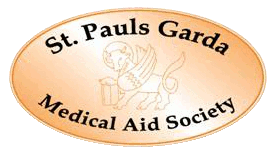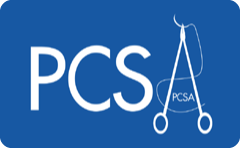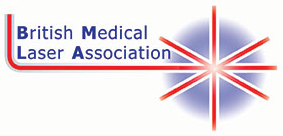Skin Cancers
Using a variety of medical an d surgical procedures, we can diagnose and treat most non-melanoma skin cancers and pre-cancers, such as actinic keratosis, basel cell carcinomas, squamous cell carcinomas and Bowen’s Disease.
The treatments used include surgical excision using radiosurgery and cryosurgery. In certain cases we use new and novel treatments, such as photodynamic therapy and special revolutionary creams which can melt away small skin cancers such as basel cell carcinomas, Bowen's Disease and actinic keratosis.
Unusual moles can be monitored by skin microscopy (Dermatoscopy) and digital photography. Most suspicious moles and malignant melaomas can be surgically removed with safe margins, using radiosurgery under local anaesthetic in our clinic.
 Download this information as a PDF
Download this information as a PDF
There are two main categories of skin cancer - melanoma and non-melanoma. Melanoma (also known as 'malignant melanoma') is less common than nonmelanoma cancers, but is the most dangerous. Non-melanoma skin cancers are mainly comprised of 'Basal Cell Carcinoma' (BCC) and 'Squamous Cell Carcinoma' (SCC). BCC is the most common and the least dangerous. In the menu above are fact sheets about each of the different types of cancer.
 Download this information as a PDF
Download this information as a PDF
Basal cell carcinoma is also known as BCC or rodent ulcer. Basal cell carcinoma is the most common type of cancer in humans and is particularly prevalent in the Australia and New Zealand. Luckily, this form of skin cancer is very rarely a threat to life.
 Download this information as a PDF
Download this information as a PDF
Squamous cell carcinoma (SCC) is a common type of skin cancer. It is derived from squamous cells, the flat cells that make up the outside layers of the skin, the epidermis. These cells are keratinising i.e., they produce keratin, the horny protein that makes up skin, hair and nails. Invasive SCC refers to cancer cells that have grown into the deeper layers of the skin, the dermis.
 Download this information as a PDF
Download this information as a PDF
Malignant melanoma is a potentially serious type of skin cancer. It is due to uncontrolled growth of pigment cells, called melanocytes. New Clinical Guidelines on the Management of Melanoma in Australia and New Zealand have been released by the New Zealand Guidelines Group and the Australian Cancer Network. Please refer to these for up to date information on the care of patients with this disease.
 Download this information as a PDF
Download this information as a PDF
You recently had a small operation on your skin and examination of the sample under the microscope showed that the problem was a malignant melanoma, a type of skin cancer. You may have a lot of questions and worries, and the purpose of this leaflet is to help with some of them, but not to be a substitute for a good conversation with your specialist. It is a good idea to:
- Write down all the questions you would like answered and bring them to your next visit.
- Bring another family member or close friend so that you can both discuss the information after your visit and be sure that you both have the same memory of what was said. This will help your family understand what has happened which makes it in turn easier for you to cope with a worrying situation.
 Download this information as a PDF
Download this information as a PDF
There are two main types of skin cancer, malignant melanomas and non‐melanoma skin cancers.
Malignant melanomas – This is the most serious and dangerous type of skin cancer. They grow rapidly, spread early and can be fatal. They usually arise from freckles or moles. The warning signs to look out for are any one of the following three major signs:
 Download this information as a PDF
Download this information as a PDF
Skin cancer is the most common of all cancers, afflicting perhaps two thirds of white-skinned New Zealanders. Skin cancer is also the easiest cancer to cure, if diagnosed and treated early. However, if the skin cancer is allowed to progress, it can result in disfigurement and even death.
 Download this information as a PDF
Download this information as a PDF
TEN RULES FOR PEOPLE WITH FAIR OR SENSITIVE SKIN AND THOSE WITH SUN DAMAGE
1.
Cover up in the sunny weather – wear a broad rimmed cotton or felt (not straw) hat that covers your face, ears and the back of your neck. Wear a long sleeved shirt and long trousers or a long dress.
2.
Put a total sun block on the exposed skin (e.g. face, ears, neck, hands and feet). Choose a factor 25 or greater (i.e. the amount of UVB blockage) with a four star or total UVA block rating; e.g. the back of the bottle should have this symbol: MAXIMUM
 Download this information as a PDF
Download this information as a PDF
Actinic Keratosis (A.K.) usually present as superficial, lightly scaly, roughening of the skin, which are often more easily felt than seen. They are usually small, (less than 10mm), discrete lesions and may be single or multiple (non – symmetrical). They are normally found on the light exposed areas such as the face, bald scalp, ears, back of the hands and lower legs in women. They are more common in people with fair skin (Type 1 and 2), who have been exposed to a lot of ultra violet radiation as a result of their age, occupation, hobbies or from living in a warm climate for a few years.
 Download this information as a PDF
Download this information as a PDF
EFFUDIX CREAM (5 FLUOROURACIL) for the treatment of solar (Actinic) Keratosis (“Sunspots”)
1.
Rub a thin smear of the ointment into the “sun spots” twice a day. Use very little ointment but rub it in well.
2.
After two weeks, the part you have been treating will be red and sore. Stop using the ointment for the next two weeks, so that the inflammation can settle down. Then start using the ointment again as before, for another two weeks.
 Download this information as a PDF
Download this information as a PDF
Photodynamic therapy (PDT) is an emerging new procedure being used by dermatologists to treat certain types of skin cancer. Current evidence is showing PDT to be effective in treating solar keratoses on the face and scalp, and superficial basal cell carcinomas. It appears to be as effective as conventional treatments such as cryotherapy (liquid nitrogen), curettage, radiotherapy and topical 5-fluorouracil (Efudix™ cream).














